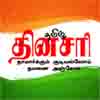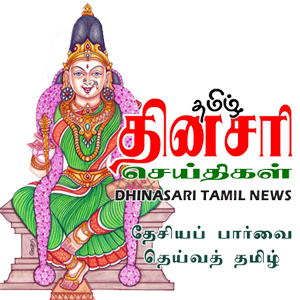
Vijaye Vishwa Tiranga Pyara | The Tricolour : The Conqueror of the World
By Kamala Murali
Who can miss the feeling of fulfilment and pride that could be detected in the eyes of an Indian holding the National Flag?
The Independence Day celebrations will definitely witness the omniscient National Celebrity, the tricolour, hands bejewelled with the flag, festoons, badges and many other artefacts with tricolour hues. Schools, colleges, Government Offices, private concerns and even Individual houses shower their respect to the National Flag by hoisting the flag. The colours present in our flag is being widely used by print, visual and digital media to reinforce the spirit of freedom and patriotism.
We learn from our Puranas that our ancient heroes had flags in their chariots, for example, the ratha of Arjun had ‘Hanuman’ flag and Duryodhana’s flag had ‘Snake with a diamond in its hood”. The kings and emperors and dynasties had flags. It was a sort of identification to know whose troop is marching during war or ceremonial marches. However, the flag for India as a nation has evolved only in early twentieth century. During the struggle for freedom the concept and design of the flag for our country has sailed through many vicissitudes to evolve into what it is today.
It was during 1904-1906 that the first Indian flag came into existence. It was made by Sister Nivedita, an Irish disciple of Swami Vivekananda. The flag came to be known as Sister Nivedita’s flag. The flag comprised of red and yellow colour and had a figure of ‘vajra’, the weapon of Lord Indra and a white lotus in the middle. The flag had the words ‘Bonde Matoram’ in Bengali written on it. The red and the yellow colour signified freedom and victory whereas the ‘vajra’ symbolized strength.
The 1905 Bengal Partition had a great impact on the psyche of the Indians. The partition day was declared as the National Day of Mourning. A year later, on the anniversary of anti-partition movement a flag was unfurled. It is said to have been hoisted on August 7, 1906, in the Parsee Bagan Square (Green Park) in Calcutta now Kolkata. It was designed by Sachindra Prasad Bose. The flag was composed of three horizontal strips of red, yellow and green. After the partition was annulled people forgot about the flag. The top most green band had eight lotus flowers representing the eight provinces, the middle yellow stripe bore the words ‘Vande Mataram’ and the lowermost band had a crescent moon on the left and a sun on the right side.
On 22 August 1907, the flag was unfurled by Madam Cama at Stuttgart, Germany. It is believed that the flag was collectively designed by Madam Cama, Vinayak Damodar Savarkar, and Shyamji Krishna Varma. The flag attained the status of the first Indian flag that was hoisted in a foreign land. It was also referred to as the “Berlin Committee flag”. The flag was also a tricolor but introduced the colour saffron for the first time. The top most band was of orange colour with eight lotuses, yellow was in the middle with words Vande Mataram and green at the bottom with symbols of the sun and moon. Another version of the flag was also released with one lotus and seven stars. The seven stars signified the Saptarishi constellation.
The Home Rule Movement propounded by Bal Gangdhara Tilak demanded Dominion Status for our country. During their agitations in 1917, they hoisted as flag with five red and four green horizontal strips arranged alternately, with seven stars in the saptarishi configuration super-imposed on them. In the left-hand top corner (the pole end) was the Union Jack. There was also a white crescent and star in one corner.
During the 1921 Congress Session, held at Bezwada in Andhra, a flag was adopted unofficially. The flag designed by Pingley Venkayya, was made up of two colours red and green that represent the two major communities Hindus and Muslims. At that time Gandhiji talked about a plan for a national flag. He suggested adding a white strip in the flag that will represent the other communities of India and the spinning wheel to symbolise the progress of the nation.
The year 1931 was a landmark in the history of the flag. A resolution was passed adopting a tricolor flag as our national flag. This flag, the forbear of the present one, was saffron, white and green with Mahatma Gandhi’s spinning wheel at the center. It was, however, clearly stated that it bore no communal significance and was to be interpreted thus.
Gandhi was fascinated with the idea of having a ‘Charkha’ in the flag as it represented self-reliance, progress and common man. It was also called the Swaraj flag, the Gandhi flag and the Charkha Flag.
In 1931, a seven-member flag committee was established in Karachi to modify the flag.
The big day for India came when Lord Mountbatten announced the decision to free India. The need to have a Flag that is acceptable to all parties was realized and an ad-hoc flag committee was headed by Dr. Rajendra Prasad to design the flag for free India. Gandhiji’s consent was taken and Pingley Venkayya’s flag was decided to be modified. Instead of the Charkha, the emblem on Ashoka’s Sarnath pillar the wheel was decided upon. None of the colours had any communal significance. The National Flag was adopted on 22 July, 1947.
It was Netaji Subhash Chandra Bose’s dream to see the Indian Tricolour hoisted on the Red Fort, a wish that came true only later, when Pandit Jawaharlal Nehru unfurled the National Flag on 16, August 1947. Every year, on 15 August , the Indian Prime Minister unfurls the Indian flag at the Red Fort to reaffirm our commitment to preserving the freedom that was won after a long struggle.
Flag code in India
The governing laws, conventions, practices and instructions for the display of the national flag are codified as Flag code. It also monitors the flag put on view in private, public and government institutions. The Flag code of India came into effect on January 26, 2002, and went through some amendments on December 30, 2021. Earlier, the display of the national flag was governed by the provisions of The Emblems and Names (Prevention of Improper Use) Act, 1950 (No.12 of 1950) and the Prevention of Insults to National Honour Act, 1971.
The Flag Code of India 2002 has been divided into three parts:
First Part: General Description of the National Flag.
Second Part: Display of the National Flag by members of public, private Organisations & educational institutions etc.
Third Part: Display of National Flag by Union or State Governments and their organisations and agencies.
The National Flag shall be a tri-colour panel made up of three rectangular panels or sub-panels of equal widths. The colour of the top panel shall be India saffron (Kesari) and that of the bottom panel shall be India green. The middle panel shall be white, bearing at its centre the design of Ashoka Chakra in navy blue colour with 24 equally spaced spokes. The Ashoka Chakra shall preferably be screen printed or otherwise printed or stencilled or suitably embroidered and shall be completely visible on both sides of the Flag in the centre of the white panel.
The National Flag shall be rectangular in shape. The ratio of the length to the height (width) of the Flag shall be 3:2.
The Flag shall not be used for commercial purposes in violation of the Emblem and Names (Prevention of Improper Use) Act, 1950.
The Flag shall not be dipped in salute to any person or thing.
Whenever the National Flag is displayed, it should occupy the position of honour and should be distinctly placed .
No other flag or bunting should be placed higher than or above or side by side with the National Flag; nor should any object including flowers or garlands or emblem be placed on or above the Flag-mast from which the Flag is flown.
The Flag should not be used as a festoon, rosette or bunting or in any other manner for decoration.
The Flag made of paper may be waved by public on occasions of important national, cultural and sports events. However, such paper Flags should not be discarded or thrown on the ground after the event. As far as possible, it should e disposed of in private consistent with the dignity of the Flag;
Amendments:
Till 2004 common ordinary citizens were not allowed to display the national flag except on special days.
It should not be forgotten that Naveen Jindal was instrumental in winning the right to display the National Flag on all days of the year for all Indians. A decade of long legal struggle came to an end with the Supreme Court ,on 2nd May, 2001 permitted Naveen Jindal to fly the National Flag with respect, dignity and honour.
On 23 January, 2004, the Hon’ble Supreme Court of India ruled that flying of the National Flag is the Fundamental Right of an Indian citizen within Article 19(1) (a) of the Constitution of India that grants freedom of speech and expression.
Amendments in 2021
As per the amendments of December 2021, the flags shall be made of hand spun, hand woven or machine-made cotton, polyester/wool/silk/khadi bunting.
The Indian Flag Code 2002, earlier only permitted flags made by ‘hand spun and woven wool or cotton silk khadi bunting’ while importing machine-made flags was banned in 2019.
Another major change, the code now permits the people to fly the Indian National Flag both day and night time.
“The Flag Code of India has been additionally amended through an order on 20th July 2022. The clause (xi) of paragraph 2.2 of Part-II of the Flag Code of India, 2022 shall now be read as follows- (xi)- where the flag has been displayed in open or the house of the member of the public, it may be flown day and night,” the official document states.
Earlier, irrespective of the weather conditions, the flags were flown from sunrise to sunset only.
During the celebration of Azadi ka Amrit Mahothsav , “Har Ghar Tiranga” has been initiated. The idea behind the initiative is to invoke the feeling of patriotism in the hearts of the people and to promote awareness about the Indian National Flag.
The Indian National Flag represents the hopes and aspirations of the people of India. It is the symbol of our national pride and there is universal affection and respect for, and loyalty to, the National Flag. It occupies a unique and special place in the emotions and psyche of the people of India.
Nothing makes us prouder than to see our Tiranga flying high. It is important to display our National Flag not only at important public buildings but also at our homes to showcase our national pride and unity. As an Indian each one of us is proud of our flag.





